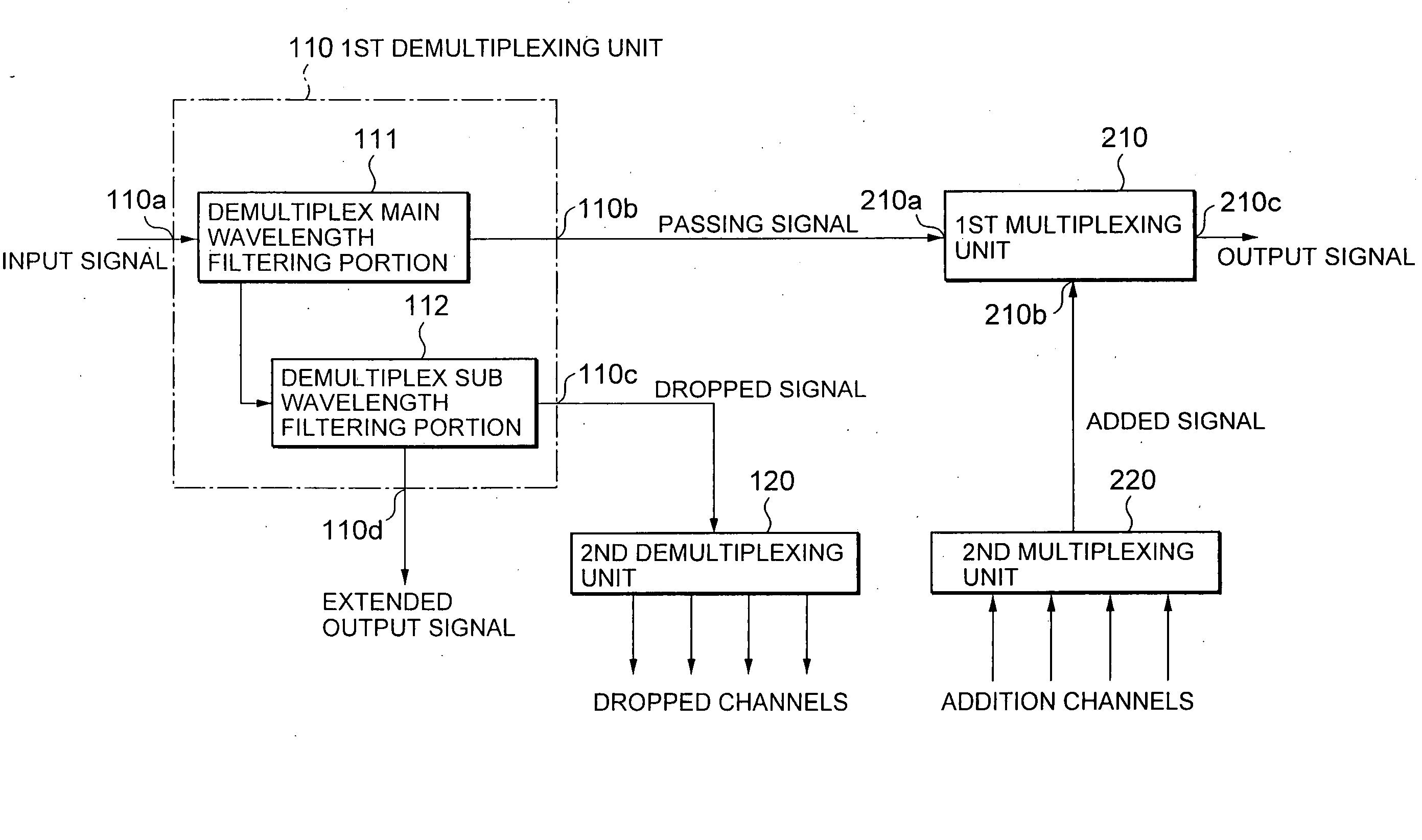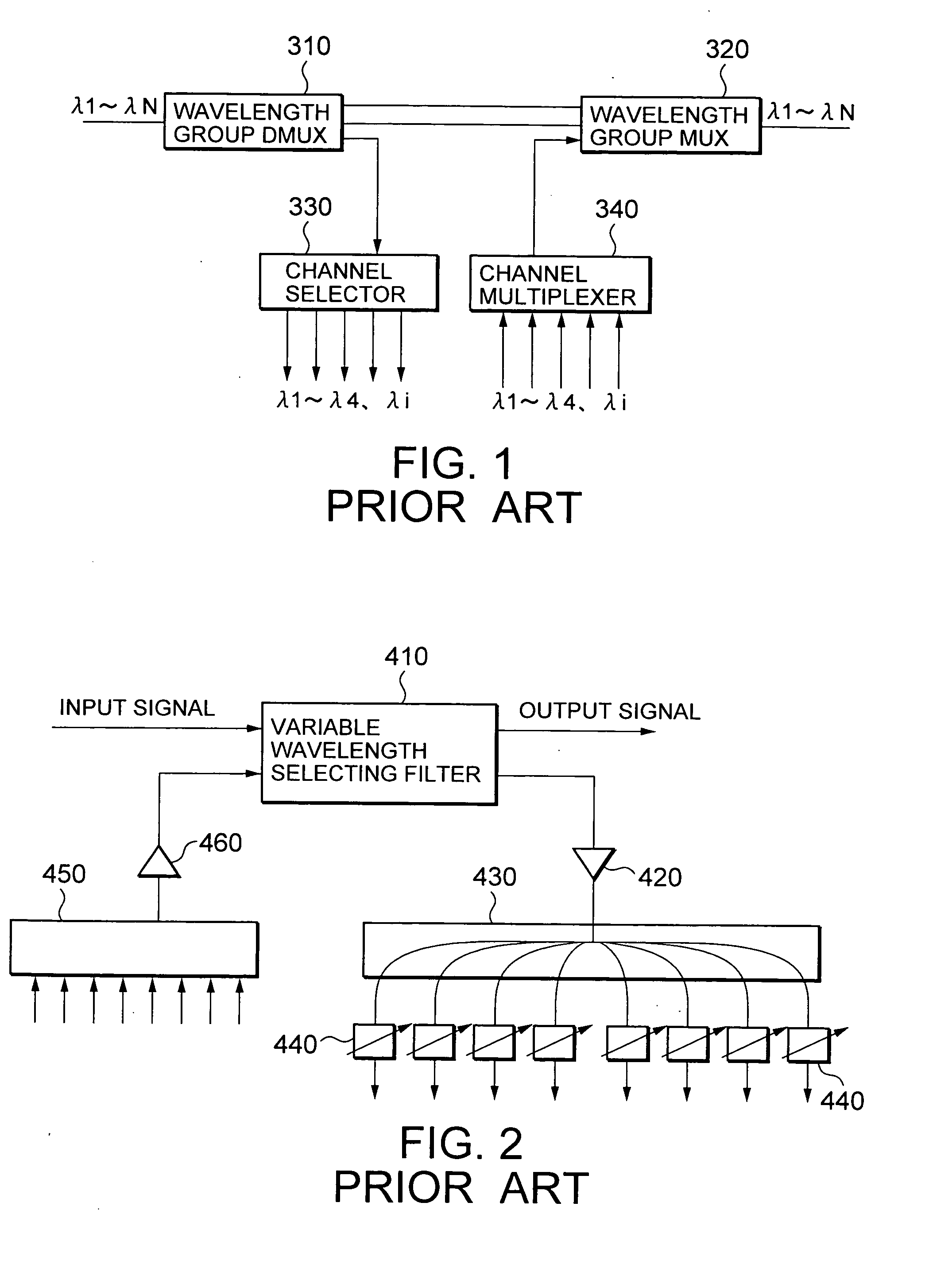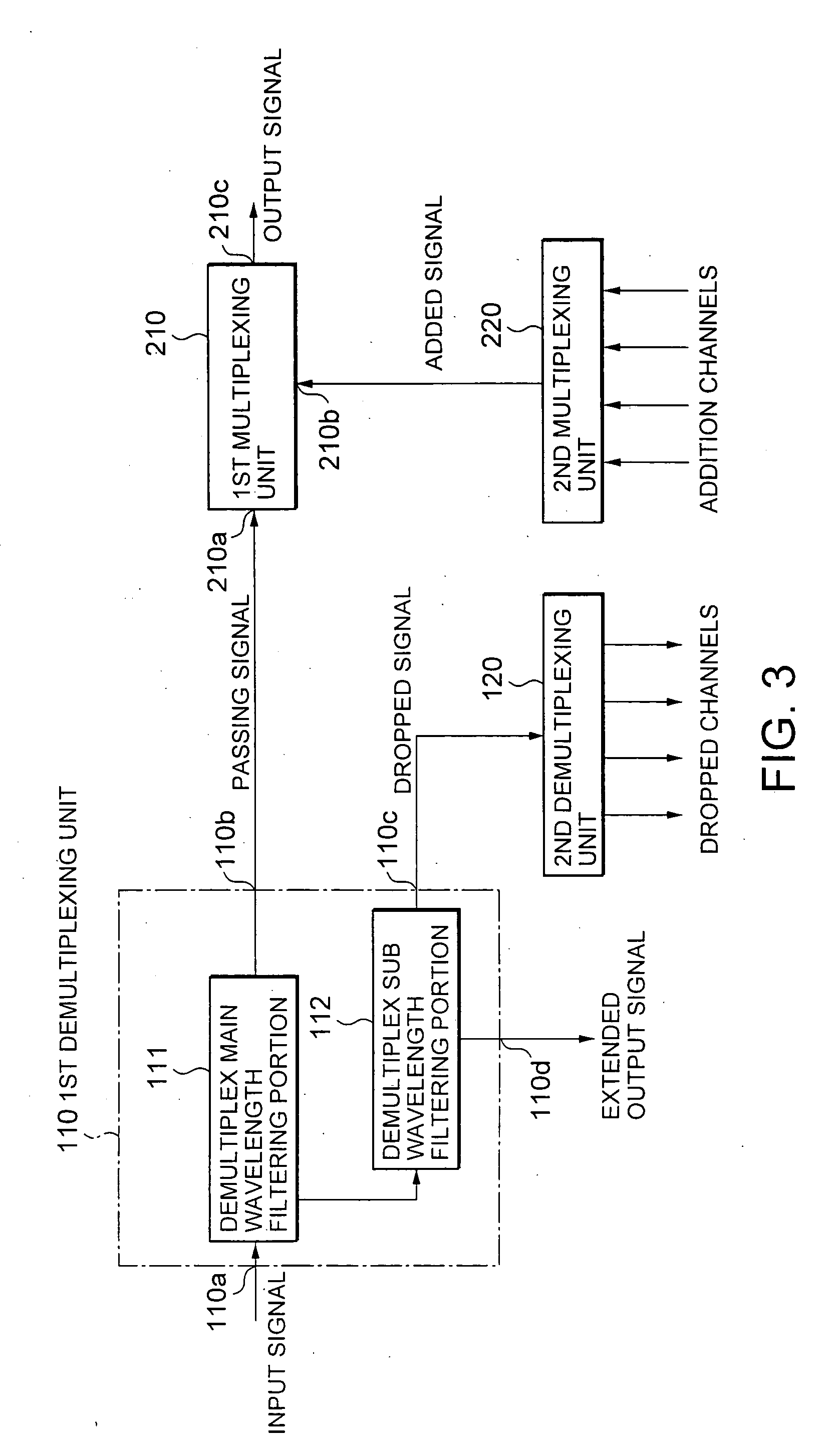Optical add-drop apparatus and method
a technology of add-drop apparatus and optical filter, which is applied in the field of optical add-drop apparatus, can solve the problems of high reliability and high cost performance, the inability to extend the channel number of the channel selector beyond the predetermined prepared number, and the drop multiplexer, so as to reduce the number of expensive filters and reduce the number of filters
- Summary
- Abstract
- Description
- Claims
- Application Information
AI Technical Summary
Benefits of technology
Problems solved by technology
Method used
Image
Examples
first embodiment
[0048] Referring to FIG. 3, the description will proceed to an optical add-drop apparatus according to this invention. The illustrated optical add-drop apparatus picks up, a dropped signal, a signal having a particular wavelength from an input signal transmitted in a wavelength-multiplexed fashion and adds an add signal to a passing signal to produce an output signal.
[0049] The optical add-drop apparatus comprises a first demultiplexing unit 110, a second demultiplexing unit 120, a first multiplexing unit 210, and a second multiplexing unit 220.
[0050] The first demutiplexing unit 110 has an input port 110a for inputting the input signal, a through output port 110b for outputting the passing signal, a dropping port 110c for outputting the dropped signal, and an extended output port 110d for outputting the extended output signal.
[0051] The first demultiplexing unit 110 comprises a demultiplex main wavelength filtering portion 111 for separating the input signal into the through sign...
second embodiment
[0066] Referring to FIG. 6, the description will proceed to an optical add-drop apparatus according to this invention. The illustrated optical add-drop apparatus is similar in structure and operation to the optical add-drop apparatus illustrated in FIG. 3 except that the first multiplexing unit further has an extended input port 210d for inputting an extended input signal. The first multiplexing unit is therefore depicted at 210A.
[0067] The first multiplexing unit 210A comprises a multiplex main wavelength filtering portion 211 and a multiplex sub wavelength filtering portion 212. The multiplex sub wavelength filtering portion 212 multiplexes the added signal and the extended input signal to produce an intermediate input signal. The multiplex main wavelength filtering portion 211 multiplexes the passing signal and the intermediate input signal to produce the output signal. The multiplex main wavelength filtering portion 211 comprises, for example, a third wavelength variable filter ...
third embodiment
[0120] Referring to FIG. 19, the description will proceed to an optical add-drop apparatus according to this invention. The illustrated optical add-drop apparatus is similar in structure and operation to the optical add-drop apparatus illustrated in FIG. 7 except that the first demultiplexing unit and the first multiplexing unit are modified from those illustrated in FIG. 7 as will later become clear and the wavelength setting portion is modified from that illustrated in FIG. 7. The first demultiplexing unit, the first multiplexing unit, and the wavelength setting portion are therefore depicted at 110A, 210A, and 200. The similar reference symbols are attached to those having similar functions in illustrated in FIG. 7.
[0121] The illustrated optical add-drop apparatus shows an example devised so as to make a plurality of wavelength bands the passing signal.
[0122] The first demultiplexing unit 110A has first and second through output ports 110b and 110b2 for outputting first and seco...
PUM
 Login to View More
Login to View More Abstract
Description
Claims
Application Information
 Login to View More
Login to View More - R&D
- Intellectual Property
- Life Sciences
- Materials
- Tech Scout
- Unparalleled Data Quality
- Higher Quality Content
- 60% Fewer Hallucinations
Browse by: Latest US Patents, China's latest patents, Technical Efficacy Thesaurus, Application Domain, Technology Topic, Popular Technical Reports.
© 2025 PatSnap. All rights reserved.Legal|Privacy policy|Modern Slavery Act Transparency Statement|Sitemap|About US| Contact US: help@patsnap.com



